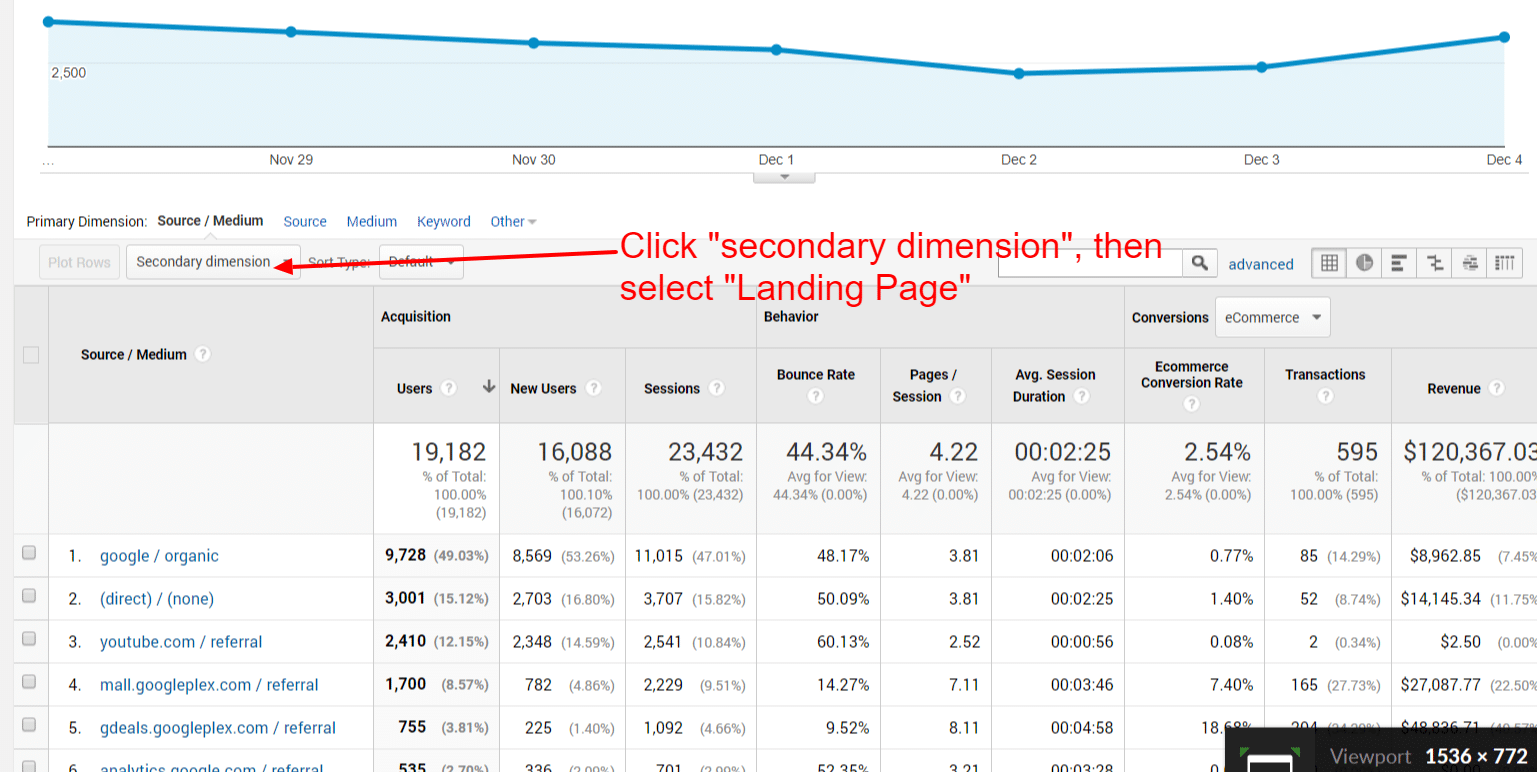Unlock Deeper Insights With Additional Measurement in Google Analytics
With the huge area of data offered in Google Analytics, the use of secondary measurements can dramatically enhance your analytical abilities. By purposefully incorporating additional dimensions right into your evaluation, you can discover important insights that could or else remain undiscovered - Secondary Dimension in Google Analytics.
Understanding Primary Vs. Additional Measurements
When evaluating information in Google Analytics, it is necessary to compare key and additional dimensions to acquire deeper insights right into customer actions. Primary measurements are the primary categories whereby you can see your information, such as touchdown, source/medium, or tool page. These dimensions offer the basic structure for organizing and recognizing your information. On the other hand, additional measurements permit you to further explore your main dimension information. By adding an additional measurement, you can layer on extra details to your key dimension, enabling a more granular evaluation. If your main measurement is the source/medium via which individuals arrived on your site, including a secondary dimension like geographic place can expose where those customers are situated geographically. This included layer of information can help you recognize fads, patterns, or anomalies that may not have actually appeared when considering the main measurement alone. Leveraging both secondary and primary measurements in Google Analytics is critical for thorough information analysis and notified decision-making.
Using Secondary Measurements Properly
Properly making use of secondary dimensions in Google Analytics enhances the deepness and granularity of information analysis, providing useful insights right into customer behavior and trends. By incorporating additional dimensions along with key measurements, marketing professionals and experts can delve deeper into the specifics of individual interactions on their websites. Secondary dimensions enable customers to sector and filter primary dimension information even more, supplying a more detailed sight of individual communications, demographics, and habits. This can be especially useful when attempting to understand the impact of specific variables on customer involvement, such as the gadgets or internet browsers they are utilizing, the sources of their website traffic, or their geographic locations.
In addition, additional dimensions enable individuals to contrast and contrast different information factors within a solitary record, promoting a more extensive analysis of user actions patterns. By leveraging second measurements successfully, businesses can uncover surprise insights, optimize their advertising techniques, and improve the total user experience on their web sites.
Checking Out Usual Secondary Dimension Mixes
To additionally analyze customer habits and trends in Google Analytics, it is beneficial to check out common mixes of second measurements. Some typical second dimension mixes that provide valuable understandings include assessing website traffic resources with user areas to understand where web site visitors are coming from geographically and how they discovered the website. Analyzing individual actions metrics with second dimensions such as passions or demographics can help in targeting details target market segments a lot more successfully.
Using Second Measurement in Customized Reports
Making use of additional measurements in custom-made records permits a much more detailed analysis of data in Google Analytics, boosting the deepness of understandings acquired. When creating custom-made records in Google Analytics, incorporating second dimensions can supply a more detailed view of exactly how numerous dimensions engage with each various other. This feature makes it possible for customers to delve much deeper right into their information and discover useful relationships that might not be instantly obvious.
By using secondary measurements in custom-made reports, individuals can obtain a better understanding of their internet site or application website traffic. As an example, incorporating the key measurement of "source/medium" with the secondary measurement of "landing page" can expose which touchdown web pages web link are carrying out ideal for web traffic originating from details resources. This insight can aid online marketers enhance their projects and boost total conversion prices.

Enhancing Data Visualization With Second Dimension
When discovering data in Google Analytics custom-made records, integrating additional dimensions not only gives a much more detailed analysis however also boosts the graph of understandings through information visualization. By including a secondary measurement to your reports, you can enhance the method information exists, making it less complicated to identify patterns, fads, and correlations within your site's performance metrics.
Additional measurements can assist you segment your data further, permitting for a deeper understanding of individual actions and communications on your site. This improved level of granularity can be especially valuable see it here when trying to isolate certain variables that may influence your site's performance - Secondary Dimension in Google Analytics.

Conclusion
To conclude, leveraging additional dimensions in Google Analytics permits a more extensive analysis of data, causing much deeper insights and even more enlightened decision-making. Secondary Dimension in Google Analytics. By adding extra layers of info to main information collections, analysts and online marketers can discover covert trends, patterns, and correlations that provide a granular view of user behavior and communications. This improved level of insight enables optimization of campaigns and tailored strategies for details audience segments, ultimately enhancing efficiency and conversion prices
On the various other hand, additional dimensions allow you to more explore your key dimension information. By adding a secondary dimension, you can layer on additional details to your main measurement, enabling an extra granular evaluation. If your primary measurement is the source/medium via which customers got here on your website, adding a second dimension like geographical area can expose where those users are situated geographically. By including secondary measurements along with main measurements, online marketers and analysts can dive much deeper right into the specifics of customer communications on their websites. Secondary dimensions enable customers to segment and filter key dimension information additionally, Web Site supplying a more in-depth sight of customer interactions, behaviors, and demographics.